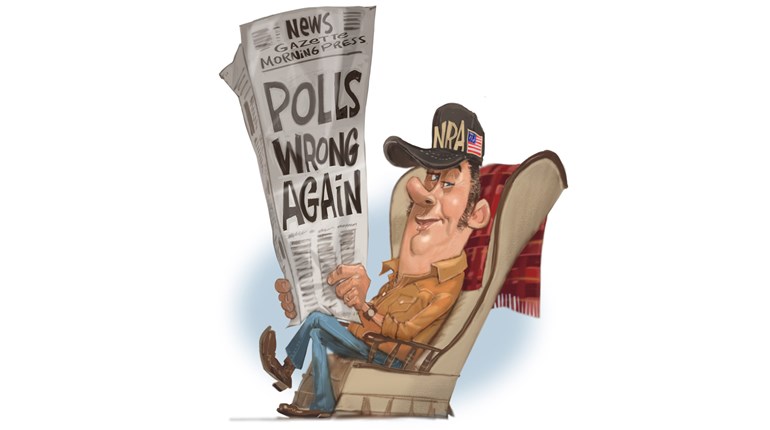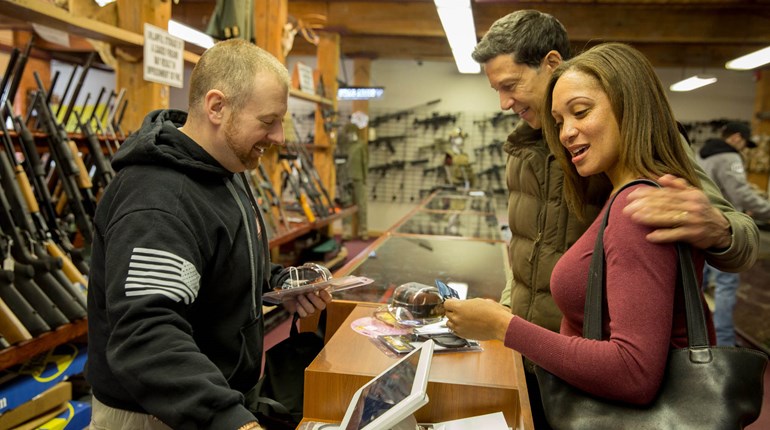
The common image of the National Rifle Association portrayed in the media is that of what Colion Noir has humorously dubbed the OFWG—the “old, fat white guy.” But one of the most remarkable trends in American society right now is how interest in guns is expanding and obliterating demographic boundaries. The prominence of women in NRA and the gun-rights movement in general has been widely noted in the last decade—but less attention has been paid to the growing racial diversity within the ranks of gun owners.
A survey conducted by the National Shooting Sports Foundation (NSSF) recently revealed mounting interest in firearms among the American Hispanic population: While a mere 18 percent own a firearm, 41 percent have visited a shooting range and 42 percent want to receive firearms instruction. A love of the outdoors was also documented among the overwhelming majority of Hispanic respondents, leading to speculation that a growing number will become interested in hunting in coming years.
An even more noticeable shift is occurring across the African-American population. A Pew Research Center poll released in December 2014 showed a massive increase in support for the idea of gun rights. While in 2012 only 29 percent of black respondents said that firearms did more to protect people than to victimize them, 54 percent thought so in 2014—a majority for the first time. There was also a 10-percent increase in the number who said that defending gun rights was more important than gun control. One of the most remarkable trends in American society right now is how interest in guns is expanding and obliterating demographic boundaries.
This shift in opinion on gun ownership appears to be at least somewhat driven from below—by the most impoverished and vulnerable urban dwellers. In Chicago, after African-American community activist Otis McDonald took his fight for the right to self-defense all the way to the Supreme Court, a study showed some of the highest concentrations of concealed-carry permits to be in poorer neighborhoods of predominantly black and Hispanic residents.
In Detroit, the appalling lack of government infrastructure has led to a self-defense revolution among the city’s least-wealthy inhabitants. Detroit Police Chief James Craig has been vocal in encouraging residents to arm themselves, as dwindling resources have hindered the police’s ability to protect them. Since he took office, we have begun to see a staggering number of armed citizen stories originating in the Motor City. Anecdotal evidence indicates that most of these successful self-defense episodes feature minority residents pulling the trigger.
A growing appreciation for the poisonous role that gun control has played for African-Americans in history—and the positive impact of responsible, socially conscious gun ownership—also appears to bolster the increased popularity of firearms among black Americans. According to activist Philip Smith, “If anyone should have the right or need to carry a gun, it should be the African-American community.”
What all of this means for the future is a new generation of NRA members that might look quite a bit different from its predecessors, but will have the same goal of protecting our Second Amendment rights. We’ll likely see a far more equal blend of men and women, gathered from all racial backgrounds. The youngest gun owners signing up to stand behind the Second Amendment are quietly enabling a seismic shift in the organization’s demographic makeup.
What won’t be any different from previous generations is what NRA believes in: protecting the vulnerable, building family traditions, preserving the great outdoors. Our growing diversity strengthens our fight for the freedom promised to all Americans.

































